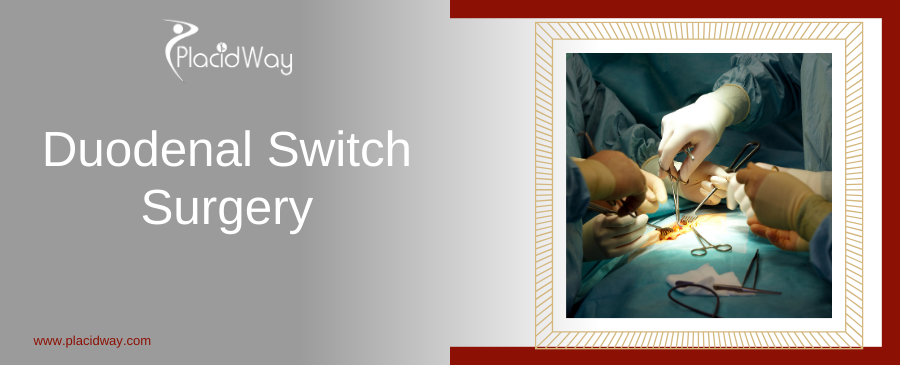
Table of Content
The Duodenal Switch (DS), also known as Biliopancreatic Diversion with Duodenal Switch (BPD-DS), is a complex weight-loss surgery that combines two surgical techniques: restrictive and malabsorptive. This surgery reduces the stomach size and alters the digestive process, which significantly limits food intake and decreases the absorption of nutrients, leading to substantial weight loss.
| Type | Description | Advantages |
|---|---|---|
| Traditional DS | Includes both restrictive and malabsorptive components. | Highly effective for long-term weight loss. |
| Single-Anastomosis DS | Modified version with potentially fewer complications. | Reduces surgery time and recovery period. |
For different packages for Duodenal Switch Surgery, click here.
| Step | Description |
|---|---|
| Preparation | Patient undergoes evaluation and pre-surgical tests. |
| Surgery | The stomach size is reduced and intestines rerouted. |
| Recovery | Initial hospital stay followed by gradual diet reintroduction. |
| Country | Cost |
|---|---|
| Mexico | $8,000 |
| Turkey | $7,500 |
| Thailand | $9,000 |
| Colombia | $7,000 |
| India | $6,500 |
| Austria | $12,000 |
| USA | $25,000 |
| UK | $20,000 |
To find prices for Duodenal Switch Surgery near you, click here.
The cost of Duodenal Switch Surgery without insurance can vary significantly depending on the country, ranging from $6,500 to $25,000.
The success rate of Duodenal Switch Surgery is generally high, with most patients losing 70-80% of their excess weight within two years.
The recovery period can vary, but most patients can return to normal activities within 4-6 weeks post-surgery.
Yes, patients need to adhere to a strict diet starting with liquids and gradually introducing solid foods, along with lifelong nutritional supplementation.
While technically possible, reversing a Duodenal Switch is complex and less common due to the nature of the surgery.
Start your journey to a healthier life with Duodenal Switch Surgery abroad. Benefit from top medical expertise, state-of-the-art facilities, and significant cost savings. Start your path to significant weight loss by booking your consultation today!
Affordable Obesity Surgery Abroad | Best Bariatric Surgery